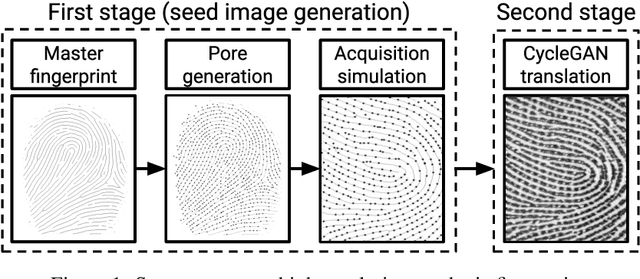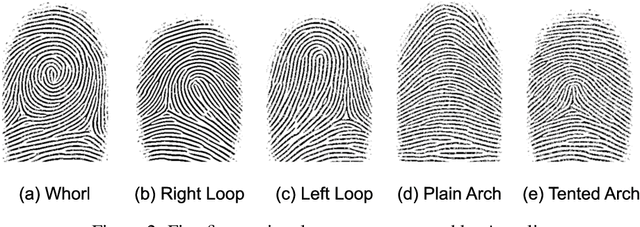André Brasil Vieira Wyzykowski
Accelerated Fingerprint Enhancement: A GPU-Optimized Mixed Architecture Approach
Jun 01, 2023Abstract:This document presents a preliminary approach to latent fingerprint enhancement, fundamentally designed around a mixed Unet architecture. It combines the capabilities of the Resnet-101 network and Unet encoder, aiming to form a potentially powerful composite. This combination, enhanced with attention mechanisms and forward skip connections, is intended to optimize the enhancement of ridge and minutiae features in fingerprints. One innovative element of this approach includes a novel Fingerprint Enhancement Gabor layer, specifically designed for GPU computations. This illustrates how modern computational resources might be harnessed to expedite enhancement. Given its potential functionality as either a CNN or Transformer layer, this Gabor layer could offer improved agility and processing speed to the system. However, it is important to note that this approach is still in the early stages of development and has not yet been fully validated through rigorous experiments. As such, it may require additional time and testing to establish its robustness and usability in the field of latent fingerprint enhancement. This includes improvements in processing speed, enhancement adaptability with distinct latent fingerprint types, and full validation in experimental approaches such as open-set (identification 1:N) and open-set validation, fingerprint quality evaluation, among others.
Level Three Synthetic Fingerprint Generation
Feb 13, 2020



Abstract:Today's legal restrictions that protect the privacy of biometric data are hampering fingerprint recognition researches. For instance, all public databases of high-resolution fingerprints ceased to be publicly available. To address this problem, we present an approach to creating high-resolution synthetic fingerprints. We modified a state-of-the-art fingerprint generator to create ridge maps with sweat pores and trained a CycleGAN to transform these maps into realistic prints. We also create a synthetic database of high-resolution fingerprints using the proposed approach to propel further studies in this field without raising any legal issues. We test this database with two existing fingerprint matchers without adjustments to confirm the realism of the generated images. Besides, we provide a visual analysis that highlights the quality of our results compared to the state-of-the-art.
 Add to Chrome
Add to Chrome Add to Firefox
Add to Firefox Add to Edge
Add to Edge